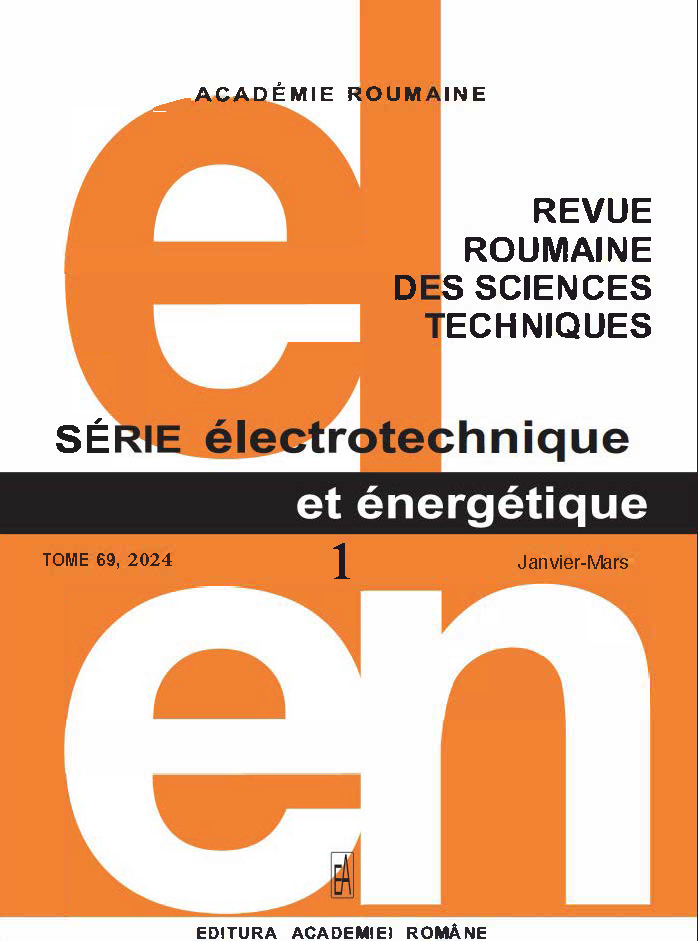UNE PROPOSITION DE GESTION DE L'IDENTITÉ NUMÉRIQUE À L'AIDE DE LA BLOCKCHAIN
DOI :
https://doi.org/10.59277/RRST-EE.2024.1.15Mots-clés :
Identité auto-souveraine, Gestion de l'identité numérique, Chaîne de blocs, Informations d'identification vérifiablesRésumé
L'identité numérique est la représentation d'une personne dans l'environnement numérique. De nos jours, l’identité numérique est devenue un sujet très important alors que la plupart des activités se déplacent vers le monde en ligne. Pour être sécurisée et respecter la confidentialité des données, cette identité numérique doit être contrôlée par son propriétaire, et non par d'autres tiers. Cet article vise à proposer un système d'identité numérique, présentant son architecture, ses fonctionnalités et ses spécifications de mise en œuvre. Ce système apporte des avantages qui seront également exposés avec des scénarios de cas d'utilisation réels, prouvant tous la nécessité de passer à un modèle moderne de gestion des identités comme le modèle d'identité auto-souveraine. Le modèle d’identité auto-souveraine est basé sur la blockchain et est fondamental pour le système d’identité numérique conçu par la recherche.
Références
(1) O. White, A. Madgavkar, J. Manyika, D. Mahajan, J. Bughin, M. McCarthy, O. Sperling, Digital identification: A key to inclusive growth, McKinsey Global Institute (2019).
(2) F. Wang, P. De Filippi, Self-sovereign identity in a globalized world: credentials-based identity systems as a driver for economic inclusion, Front Blockchain, 2 (2020).
(3) R. Brescia, Social change and the associational self: protecting the integrity of identity and democracy in the digital age, Penn State Law Review, 125, 3 (2021).
(4) Š. Čučko, M. Turkanović, Decentralized and self-sovereign identity: systematic mapping study, IEEE Access, 9, pp. 139009–139027 (2021).
(5) G. Laatikainen, T. Kolehmainen, P. Abrahamsson, Self-sovereign identity ecosystems: benefits and challenges, Proceedings of the 12th Scandinavian Conference on Information Systems (Article 10) (2021).
(6) ***Juniper Research. Available at: https://www.businesswire.com/news/home/20230226005042/en/Juniper-Research-Active-Digital-Identity-Apps-to-Surpass-4.1-Billion-by-2027-as-Third-party-Platforms-Look-to-Leverage-Civic-Identity-Systems.
(7) D. Pöhn, M. Grabatin, W. Hommel, eID and self-sovereign identity usage: an overview, Electronics, 10 (2021).
(8) A. Giannopoulou, Digital identity infrastructures: a critical approach of self-sovereign identity, DISO, 2 (2023).
(9) ***Goode Intelligence. Available at: https://www.goodeintelligence.com/press-releases/goode-intelligence-forecasts-that-over-three-billion-digital-identities-will-be-issued-by-2025/
(10) J. Keil, Self-sovereign identity: use cases, level of maturity and adoption (2020).
(11) ***uPort. Available at: https://www.uport.me.
(12) A. Panait-Drăgnoiu, R. Olimid, A. Stefanescu, Identity management on blockchain - privacy and security aspects, Proceedings of the Romanian Academy - Series A: Mathematics, Physics, Technical Sciences, Information Science, 21 (2020).
(13) ***Shocard. Available at: https://shocard.com.
(14) ***Bitnation. Available: https://tse.bitnation.co.
(15) J. Uchill, Microsoft demos SSI open standards at identiverse: ‘This is the power of standards’. Available at:
(17) Z. Song, Y. Yu, The digital identity management system model based on blockchain, International Conference on Blockchain Technology and Information Security (ICBCTIS), 2022, pp. 131–137 (2022).
(18) U. Der, S. Jähnichen, J. Sürmeli, Self-sovereign Identity – opportunities and challenges for the digital revolution, arXiv (2018).
(19) R. Soltani, U. Nguyen, A. An, A survey of self-sovereign identity ecosystem, Security and Communication Networks (2021).
(20) F. Schardong, R. Custódio, Self-sovereign identity: a systematic review, mapping, and taxonomy, Sensors, 22 (2022).
(21) A. Preukschat, D. Reed, Self-Sovereign Identity: decentralized digital identity and verifiable credentials, Manning Publications Co. (2021).
(22) M. Sroor, N. Hickman, T. Kolehmainen, G. Laatikainen, P. Abrahamsson, How modeling helps in developing self-sovereign identity governance framework: An experience report, Procedia Computer Science, 204 (2022).
(23) T. Matsuzaki, Verifiable Credentials: Decentralized Credential Flows (2020).
(24) Y. Liu, D. He, M.S. Obaidat, N. Kumar, M.K. Khan, K.R. Choo, Blockchain-based identity management systems: A review, Journal of Network and Computer Applications, 166 (2020).
(25) A. Olteanu, R.N. Pietraru, S.M. Olanescu, M. Moalfa, Innovations in the educational process in technical universities based on an ontology for interactive teaching system, RRST-EE, 66, 1, pp. 53–58 (2021).
(26) I.C. Stanica, F. Moldoveanu, M.I. Dascalu, I.V. Nemoianu, G.P. Portelli, Advantages of telemedicine in neurorehabilitation and quality of life improvement, RRST-EE, 66, 3, pp. 195–199 (2021).
(27) L. Meng, Q. Zhao, M. Song, Y. Jian, H. Tian, Authenticated key agreement scheme based on blockchain for AMI communication security, RRST-EE, 68,2, pp. 218–223 (2023).
Téléchargements
Publiée
Numéro
Rubrique
Licence
(c) Copyright REVUE ROUMAINE DES SCIENCES TECHNIQUES — SÉRIE ÉLECTROTECHNIQUE ET ÉNERGÉTIQUE 2024

Ce travail est disponible sous licence Creative Commons Attribution - Pas d'Utilisation Commerciale - Pas de Modification 4.0 International.


